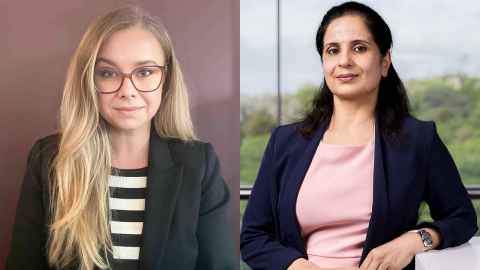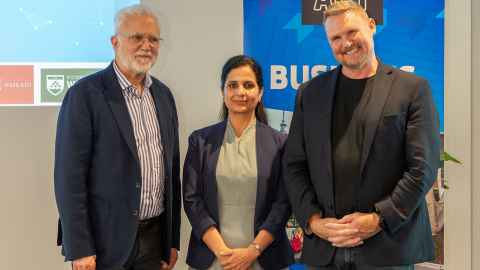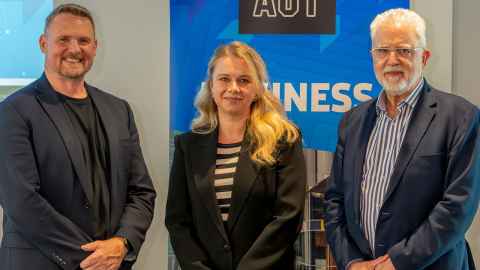No jargon required: academics ace research translation
30 October 2025
Two researchers have won national recognition for showing how fresh thinking can make work and law more people centred.

University of Auckland researchers have been recognised for translating research that explores how people can find greater meaning in their work, and how the law can be clearer and more accessible.
The 2025 New Zealand Business Research Translation Competition, held at AUT, challenged academics from business schools across the country to translate a published research paper, typically ranging from 4000 to 8000 words, into a 750-word article that’s easily understood by a non-academic audience.
Business School researcher Dr Deepika Jindal won the Early Career Researcher category for ‘The Hidden Power of Letting Go: What Happens When Employees Shape Their Own Jobs’.
Meanwhile, Auckland Law School and Business School academic, Associate Professor Marta Andhov was named runner-up in the Senior/Established Researcher category for her article ‘Say it with a picture: overcoming legalese in public procurement contracts’.

Jindal’s work challenges traditional management assumptions by showing that the best-performing employees aren’t just motivated, they’re trusted to make their roles their own.
Her study of 320 people found that job crafting — when workers reshape their tasks, relationships, or work methods to better fit their strengths and goals — leads to higher performance and stronger workplace cultures. Crucially, she says, this behaviour thrives when people are both highly engaged and have the autonomy to act.
“Motivation without autonomy is like fuel without an engine — it can’t go anywhere,” says Jindal. “When people feel trusted to shape their work, they often shape it for the better.”

Andhov’s entry explores how visuals, from diagrams to comic strips, could improve the way legal contracts are written and understood.
In her article, she argues that visual contracting could transform public procurement (the way governments buy goods and services) by replacing dense legal language with accessible imagery, helping small businesses and community groups.
“Visual contracts can make public procurement more transparent and inclusive,” says Andhov. “By simplifying complex legal documents, governments could attract more diverse suppliers and improve outcomes for taxpayers.”
Her research examines international examples, where visual contracts have reduced disputes and improved compliance in industries such as construction, banking and employment. But she also highlights challenges: questions of legal enforceability, design costs, and the need for buy-in from policymakers and procurement officers.
The judges praised Andhov’s essay for its clear, engaging writing and innovative approach to making public procurement more inclusive.
Media contact:
Sophie Boladeras, media adviser
M: 022 4600 388
E: sophie.boladeras@auckland.ac.nz